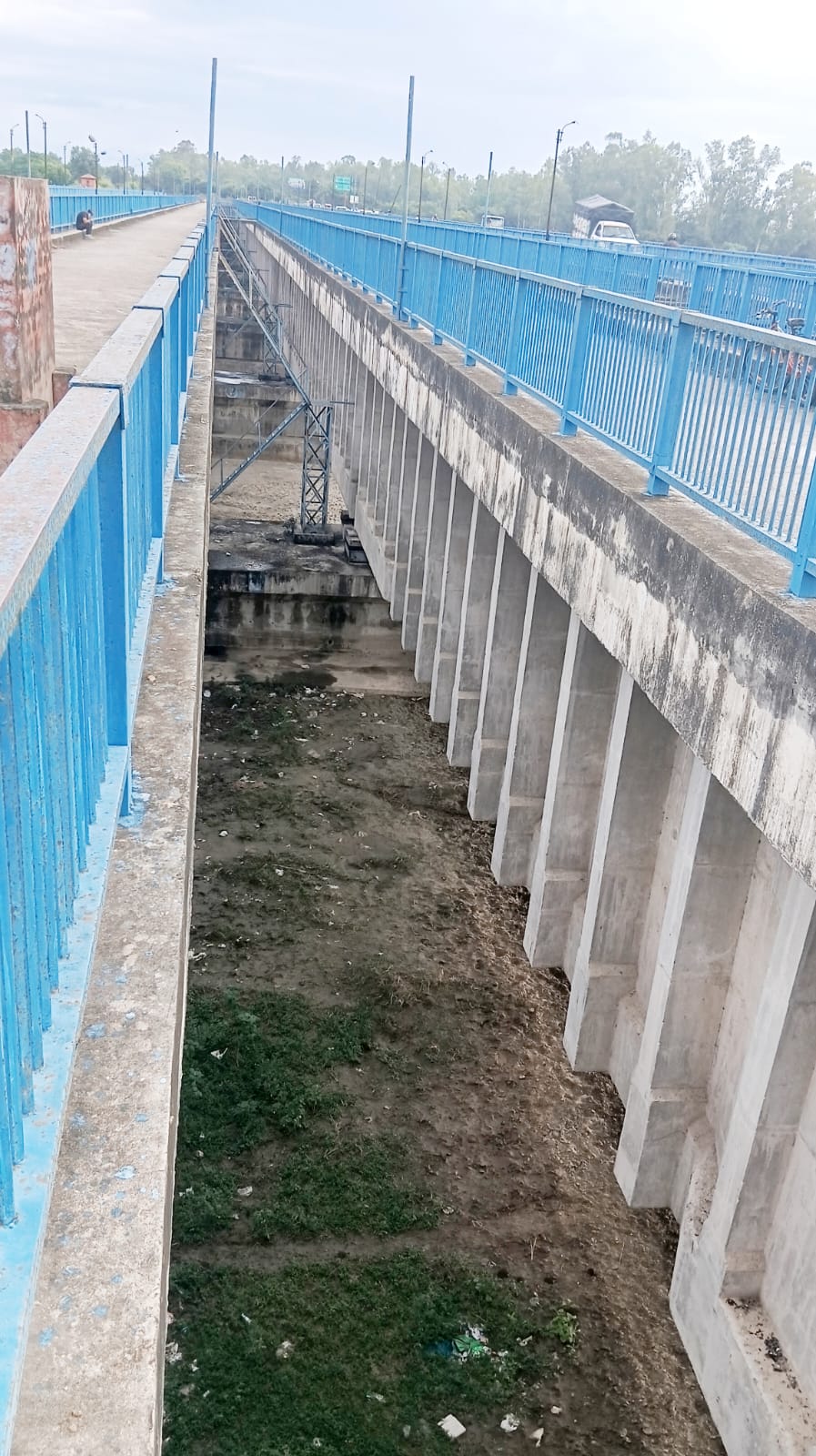By
Kaushal Kishore
Materials Engineer, Roorkee
The new Solani aqueduct on Ganges canal Roorkee was built with prestressed concrete which allows for longer spans and a simple more robust design compared to old bricks, lime- surkhi mortar masonry arches of the old aqueduct, in which 8.5 crores bricks were used, while iron railing used in the sides of two lanes were imported from England. This is interesting to note that materials bringing those days on ship from England to Indian ports take 6-10 weeks via the Suez canal or 3 to 6 months via the longer Cape of Good Hope. Calculate in it also time taken on road from Indian ports to Roorkee.
After retirement from University of now IIT Roorkee I joined M/S Roffe Construction Chemicals Pvt.Ltdd, Mumbai as it’s Chief Concrete Technologists afterwards I became it’s one of the Director.

AQUEDUCT picture taken on 7/10/2025
For the contractor of above aqueduct I designed M-40 grade of concrete with Roffe superpladticizer. Those interested may read my paper by visiting Google site and log in; Civil engineering portal The Ganges canal by Kaushal Kishore.
I had designed numerous concrete mix design almost all cements of India in this I find Utra Tech cement as one of best cement OPC and PPC both With Ultratech cement I had designed numerous concrete mixes from ordinary strength to M-80 grade concrete, self compacting concrete, shot crete concrete, fibre reinforced concrete, fly ash concrete and more There is life after retirement and after retirement I worked for 30 year’s which includes in free time working in home research and testing laboratory and numerous construction sites visits almost all India and outside India. At my age of 92 years I still work for 12 hours daily.
I had never worked for money. In spite of doing so gigantic work what to say about car I even do not have 2 wheeler not any of my house not a single inch of land in this world only pension from IIT Roorkee and few clothes

























how can i solve mix design problem ?
What is min. dia. of bored pile in a river bed?
how can i calculate the volume of concrete in pile single bulb
we are need construction joint treatment procedure
i wanna ask a qstn …..
Smbdy answr it… Wat is 1st nd 2nd shift in civil engg. ???
according to IS 456:2000, BY USING FORMULA D^2/162 , D= DIAMETER OF REINFORCEMENT BAR, THEN U WILL WEIGHT OF STEEL PER METER CUBE
dear bhaskerthis formula can use only per meter not for cum weight
i think its only per meter
The compressive strength of steel?
The compressive strength of steel is the same as its tensile strength
78.5
is depend upon the grade of steel
density of cement?
1440 kg/m3 Tulsi this is your answer
The density of cement plays a significant role both in its production and performance. The raw minerals are heated in huge ovens to promote chemical changes and this produces “clinker”. The final steps in cement manufacturing involve grinding (milling) and blending that produce the fine powder that is recognizable as cement. Every step in the manufacture of cement is checked by frequent physical tests, as is finished product, to ensure that it complies with all necessary specifications. Cement is ground to a particular fineness since the influence of particle size on the kinetics of cement hydration and development of strength is well known. For a given cement content, a reduction in median particle size generally produces a higher compressive strength. Consequently the fineness of Portland cements has been increased over the years to improve properties such as higher early strengths. Nevertheless, other effects of increased fineness, such as higher water demands and more rapid heat generation in the concrete cannot be ignored. Despite the availability of instrumental methods of measuring particle size distributions, the classical method of air permeametry remains. The density of cement should be known in connection with the design and control of concrete mixtures.
1440 kg
1.44 gm/cc
2300 kg/m^3
1440 KG/CUM
i m final year student of BE. So i want information about the job. How i m apply then get good job
better try with reference. no jobs available directly these days
Hi…..This site is very useful for every civil student
7.34 timothy ur ans
it’s really portal of civil…………
Density of Cement is generally taken as 1.5g/cc i.e 1500Kg/m3.
I think,It’s really a good one site for all about Civil Engineering.I am not a teacher,I wanna be a learner cz I m till now a student 🙂
What is the difference between high strength concrete and high performance concrete?
High strength concrete only takes in consideration strength of cement while high performance concrete are those which focus mostly on serviciability, protection against exposure etc.
**Concrete is defined as “high-strength concrete” solely on
the basis of its compressive strength measured at a given
age.
**Defined high-performance concrete as
a concrete meeting special combinations of
performance and uniformity requirements
that cannot always be achieved routinely
using conventional constituents and normal
mixing, placing, and curing practice
Concrete is defined as “high-strength concrete” solely on
the basis of its compressive strength measured at a given
age.any concrete mixtures that showed 40 MPa
or more compressive strength at 28-days were designed as
high-strength concrete.
highperformance
concrete (HPC) for concrete
mixtures possessing high workability, high
durability and high ultimate strength.
high strength concrete is that which is having more durability and high performance means which is having more workability…
Which is the best method of determining field compaction between: [1] Sand replacement method and [2] Core cutter method and others. Thanks in anticipation.
Core cutter is better over sand replacement bacause sample is not disturb and field condition remain prevalent in extracted sample
Sand replacement method
sand replacement method
good site
the meaning of fe415 and m20
i am glad to join this site!!!!
I am going to do my final year civil engineering project,can anyone please suggest some topic and its prospects,it will be good if it is structure related.Thanking you sir in advance.
Hello
I just want to calculate a load barring capacity of a steel bracket, which is mounted on the wall by 16 bolts. actually, i want to put a motor on to it. that motor is for elevator. can u please help me with that